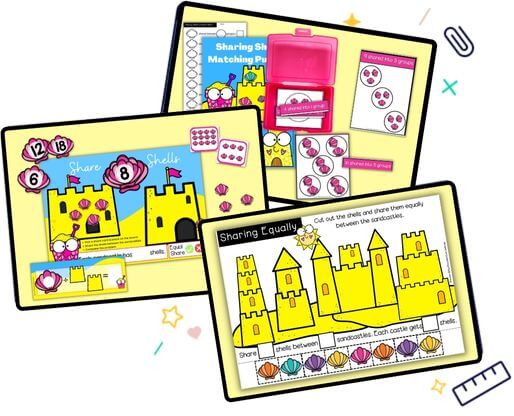Division Activities
Operations
Hey there, primary school teachers! Are you ready to add some excitement to your math lessons and make division a total blast? Look no further, because we’ve got a treasure trove of division activities that will captivate your young learners while solidifying their math skills. From sharing scrumptious treats to grouping adorable toys, we’ve got you covered with a collection of fun and effective ways to teach division.
Teaching division can be both exciting and challenging. As primary school teachers, we play a crucial role in helping our young learners develop a solid understanding of this fundamental mathematical concept. In this blog post, we’ll delve into the definition of division, explore sharing and grouping as different division methods, discuss essential division skills for students, and address common issues they may encounter during the learning process.
What is Division?
Division is a fundamental mathematical operation used to distribute or split a quantity into equal parts or groups. It is the opposite of multiplication and is represented by the division symbol “÷” or by writing the numbers with a horizontal line between them.
In division, three main components are involved:
- Dividend: The number being divided or the total quantity that needs to be distributed.
- Divisor: The number by which the dividend is divided, representing the number of equal parts or groups we want to create.
- Quotient: The result of the division, representing the number of items in each part or group.
The process of division involves finding how many times the divisor can fit into the dividend equally. If the division is exact, there will be no remainder, but if the division is not exact, a remainder will be left over.
For example, in the division problem 12 ÷ 3:
- The dividend is 12 (total quantity to be divided).
- The divisor is 3 (number of equal parts/groups).
- The quotient is 4 (each part will have 4 items).
So, division helps us share things equally, solve fair sharing problems, and understand fractions and ratios. It is a fundamental skill used in various aspects of mathematics and everyday life, from sharing candies among friends to solving complex mathematical problems.
Difference Between Sharing (by Division) and Grouping (by Division)
Knowing the difference between division by sharing and division by grouping is essential because it helps students develop a deeper understanding of the concept of division and its practical applications. Understanding these two methods of division allows students to approach a wide range of problem-solving scenarios with confidence and accuracy. Let’s dive into explaining division by sharing and division by grouping to your students in a way that’s easy to understand.
Division by Sharing: Imagine you have a collection of toys, and you want to share them equally among a group of friends. Division by sharing is all about making sure each friend receives an equal number of toys. For example, if you have 12 toys and 3 friends, you’ll count and distribute the toys so that each friend gets 4 toys. This way, everyone is happy and gets a fair share!
Division by Grouping: Now, let’s talk about division by grouping. Imagine you have a collection of colorful buttons, and you want to organize them into groups of the same type. Division by grouping involves sorting the buttons into sets. For instance, if you have 12 star buttons, you’ll arrange them into groups with 3 stars in each. You’ll end up with 4 groups of star buttons!
Understanding the distinction between division by sharing and division by grouping empowers students to approach different types of problems effectively. It equips them to solve scenarios where they need to share items equally among a group (like sharing candies) or organise objects into sets with a specific number in each group (like grouping stickers). Mastering both approaches enables students to become confident problem solvers and enhances their overall mathematical skills.
Encourage your students to practice both methods, and they’ll become division champions in no time! Providing them with various real-world examples will make division concepts relatable and engaging, helping them grasp these fundamental mathematical skills with enthusiasm. Keep fostering their curiosity and love for learning, and they’ll develop a solid foundation in division and beyond!
Teaching Essential Division Skills
To ensure our students grasp the concept of division, teachers need to focus on developing the following essential skills:
- Dividing into Equal Groups: Encourage students to divide a collection of objects into equal-sized groups. This lays the foundation for understanding both sharing and grouping methods of division.
- Recognising the Difference: Help students differentiate between sharing and grouping division scenarios. Emphasize that the process and result vary depending on the problem’s context.
- Problem-Solving: Present students with simple division problems that require both sharing and grouping. This will help them apply their knowledge and develop fluency in using both division methods.
Inverse Operations – Subtraction and Division
Another consideration when teaching division is that subtraction and division are related through the concept of inverse operations. In mathematics, inverse operations are operations that “undo” or reverse each other. Subtraction and division are inverse operations of each other because they work in opposite directions.
Let’s explore the relationship between subtraction and division:
Subtraction as the inverse of Addition: Addition and subtraction are inverse operations. If you add a number to another number and then subtract the same number, you end up back where you started. For example:
- 5 + 3 = 8
- 8 – 3 = 5
Division as the Inverse of Multiplication: Similarly, division and multiplication are inverse operations. If you multiply a number by another number and then divide the product by the same number, you get back to the original number. For example:
- 4 x 6 = 24
- 24 ÷ 6 = 4
Division as Repeated Subtraction: Another way to see the connection is that division is like repeated subtraction. When we divide a number by another number, we are essentially finding how many times the second number can be subtracted from the first number to reach zero or a remainder. For example:
- 15 ÷ 3 = 5
- This means that 3 can be subtracted from 15 five times to get 0.
So, in summary, subtraction and division are related as inverse operations. Division undoes multiplication, just as subtraction undoes addition. Understanding this relationship helps students build a strong foundation in basic arithmetic and lays the groundwork for more advanced mathematical concepts.
Issues Students Face when Learning about Division and How Teachers Can Help
Teaching division can be an exciting yet challenging journey, as students embark on the path of mastering this essential mathematical operation. As educators, it’s crucial to be aware of the difficulties students may encounter while learning about division and equip ourselves with effective strategies to guide them through the process.
By understanding these common challenges and implementing tailored solutions, we can create a supportive learning environment that nurtures students’ math proficiency and builds their confidence. Continue reading to explore the issues students face when learning about division:
- Difficulty: Division Vocabulary – Understanding “quotient,” “divisor,” & “dividend” is challenging. Students encounter unfamiliar terms in division, impacting comprehension and communication. Solution: Introduce vocabulary in context, provide explanations, use visual aids, include interactive activities, and encourage confident usage in discussions.
- Lack of Connection: Real-World Scenarios – Students struggle to connect division to daily life, perceiving it as abstract and irrelevant. Solution: Present division in relatable contexts, use word problems with practical applications, and encourage students to share real-life examples.
- Division Facts Memorization – Memorizing division facts feels overwhelming. Students lack fluency, hindering problem-solving and confidence in handling complex division. Solution: Use fun techniques like flashcards, songs, games, and competitions to facilitate effective memorization and celebrate progress.
- Division with Remainders Students find division with remainders confusing. They struggle to interpret remainders and their significance in real-world contexts. Solution: Offer clear explanations, connect to practical scenarios, and provide word problems involving remainders for application.
- Fractional Division Understanding – Dividing fractions poses challenges. Students struggle to grasp the concept, leading to errors and uncertainty. Solution: Utilize visual aids, real-life examples, manipulatives, and scaffolded practice to enhance comprehension and confidence.
- Applying Division to Word Problems – Translating word problems into division equations is tricky. Students struggle with identifying relevant information and choosing the right operation. Solution: Guide step-by-step problem-solving, use visuals, provide scaffolded practice, and encourage explanations for solutions.
- Confusion: Division vs. Subtraction: Mixing up division with subtraction leads to errors in division problems. Students struggle to differentiate between the two operations, affecting their problem-solving confidence. Solution: Clarify differences, use examples, engage in interactive activities, highlight keywords, and discuss real-life applications to distinguish division from subtraction
- Recognising Patterns in Division Tables – Students can’t identify patterns in division tables, affecting their fluency in division facts and problem-solving. Solution: Engage with patterns using visuals, games, and interactive activities to reinforce recognition skills.
- Rote Learning – Relying on rote learning hinders a deeper understanding of division. Students memorize procedures without grasping underlying concepts. Solution: Emphasize critical thinking, apply division to real-world situations, and explore the reasoning behind solutions.
- Difficulty: Long Division – Long division overwhelms students. Multi-step processes lead to errors and frustration. Solution: Break down steps, provide explanations, use visual aids, offer guided practice, and support individualized instruction.
To help students overcome these difficulties, teachers should employ a variety of teaching strategies, including hands-on activities, visual aids, real-life applications, and differentiated instruction. Creating a supportive and positive learning environment that encourages students to ask questions, discuss their thought processes, and collaborate with peers can also contribute to their success in mastering division.
Addressing the common challenges they may face ensures that every student feels confident and successful in their division endeavours. Together, let’s inspire a love for math and empower our students to excel in this fascinating world of numbers!
Explore tags
Click the images for Division Activities
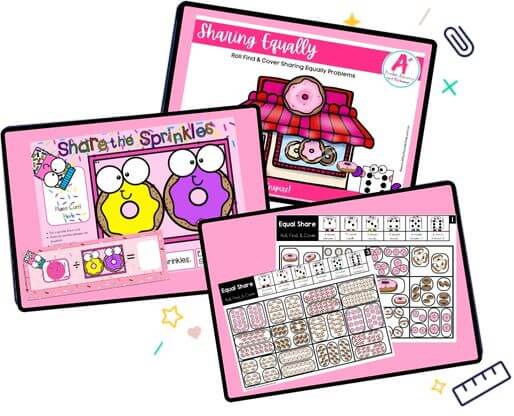
"Divide & Share: Donut-themed" teaching resources are the perfect addition to your early year's classroom. These engaging, hands-on activities will not only introduce your students to the concept of division but also create lasting memories of fun-filled learning experiences!
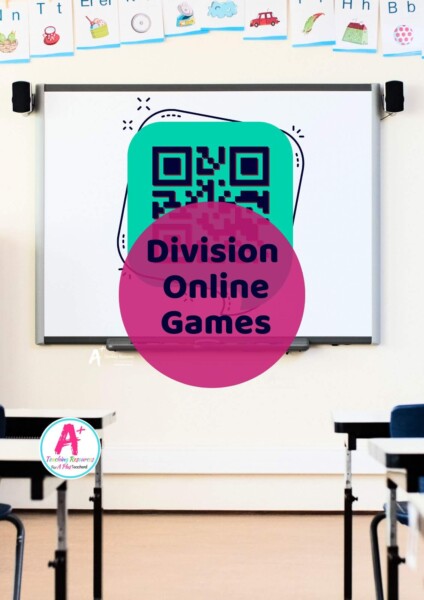
DIGI - Division Games

Equal Sharing Division - Share into 5 groups
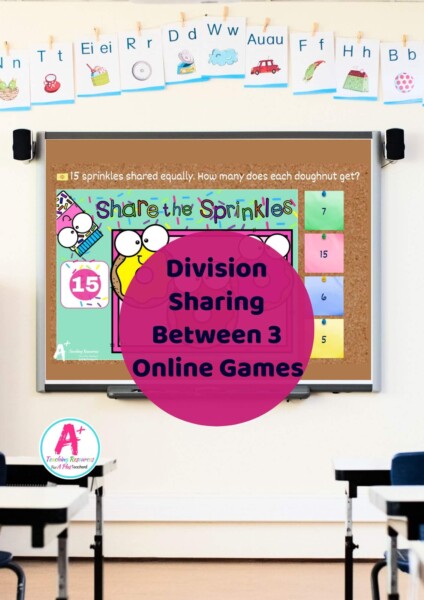
Equal Sharing Division - Share into 3 groups
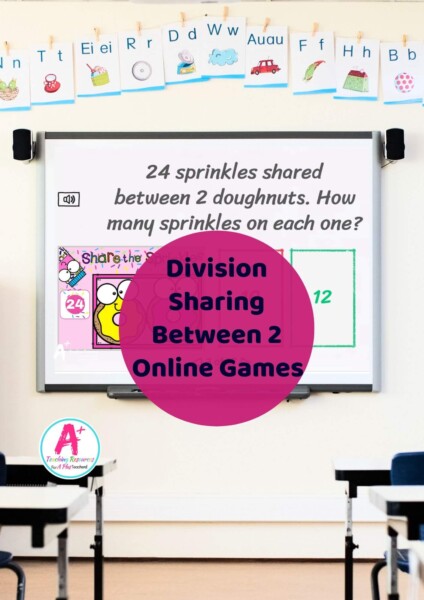
Equal Sharing Division - Share into 2 groups
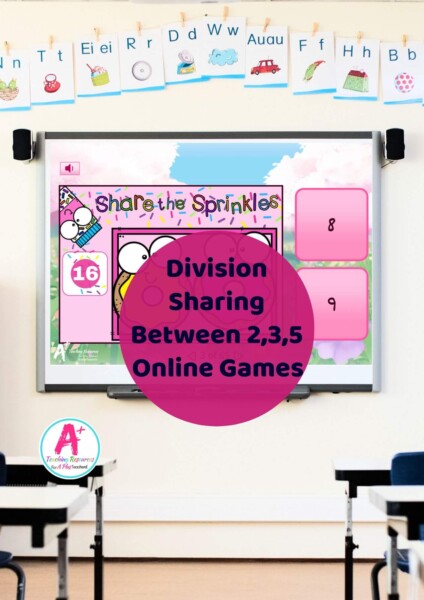
Equal Shares - Share into 2,3,5 groups
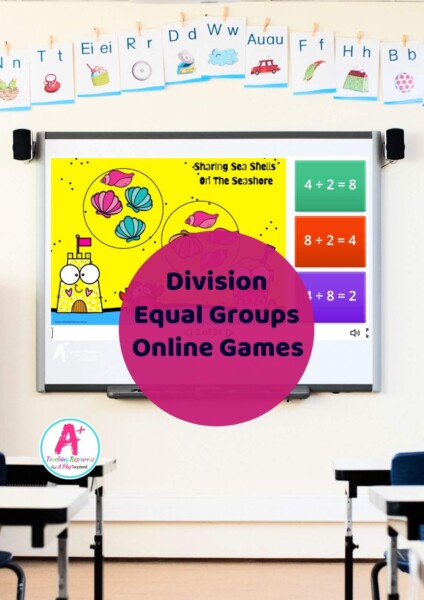
Equal Share - match number sentence to the problem
Can't find what you're looking for?
Send us a request! Use this form to request a resource. Please give details of the learning area, topic, year level, curriculum links. We’ll be happy to take a look to see if we can fit it in. Unfortunately a request does not guarantee we will be able to make it!
"*" indicates required fields

